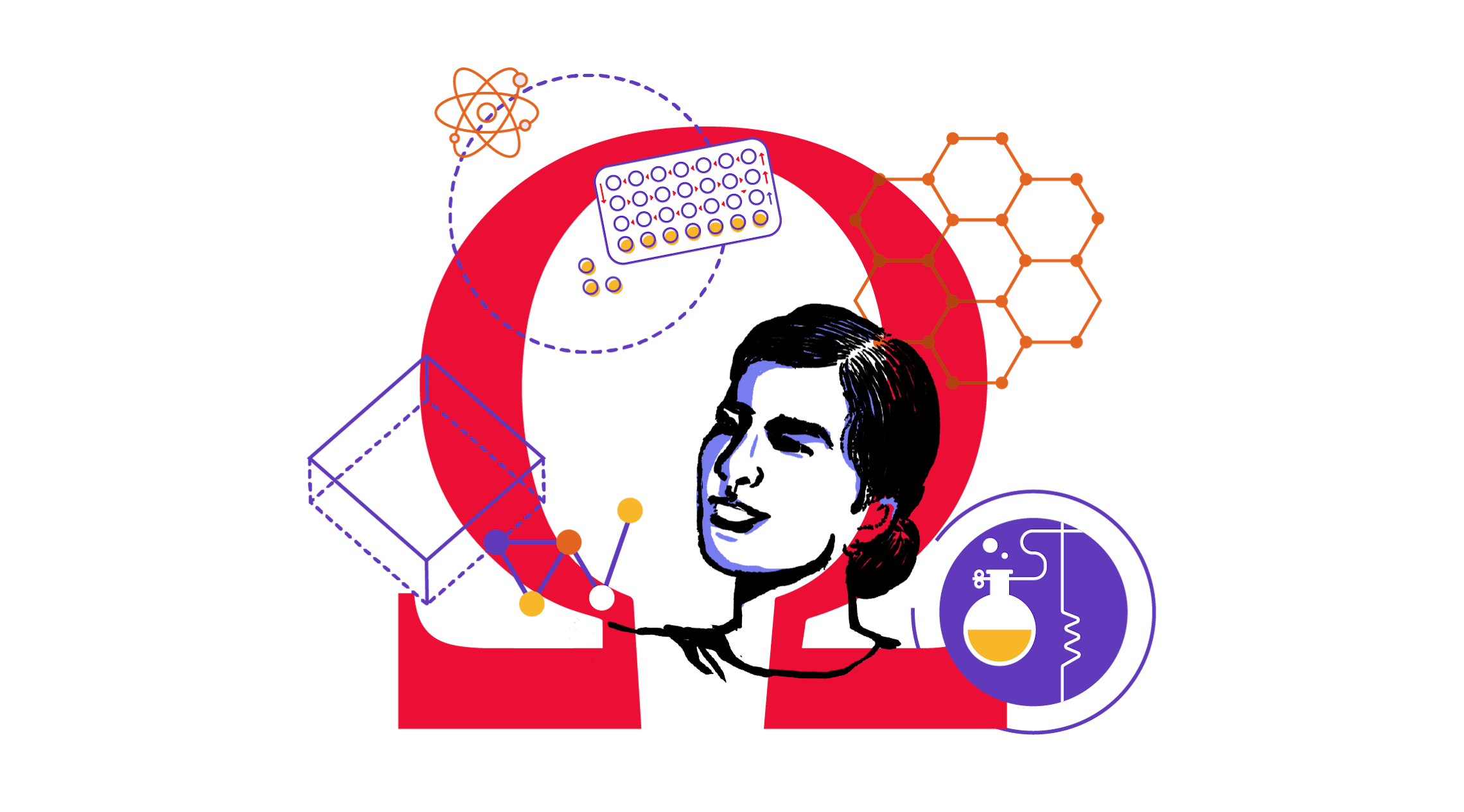Stories of science are often about its institutions, or the men who run it. The association is so deep-rooted that it’s taken years to talk and write about people in science who aren’t cisgender men. If you’ve recently read a feel-good feature or social media thread hashtagged #WomenInSTEM, you’ve encountered the fruits of these efforts.
But there are some stories that reject the binaries inherent in the idea of carving a place in a man’s world, or queering a straight discipline. Chayanika Shah and her cohort are the characters of one such story. It is messy and haphazard, as science, and life, often is.
Chayanika, who’s now 63, wears many hats—activist, researcher, teacher—but is perhaps best known as one of the leading lights of feminist science studies in India. This discipline is a lens to view the world with, to understand the ways in which gender constructs influence how we make and present scientific knowledge. (Evelyn Fox Keller, one of its pioneers, famously gave the example of how biology’s understanding of sperm and ovum mirrored stereotypes of our lived experiences: the “aggressive” sperm provides, the “passive” ovum receives.)
By the time Chayanika first started to teach a feminist science studies course in the late 2000s, she’d been preparing her entire life for it. Her political education began at the Indian Institute of Technology, Bombay in the 1970s, and then continued through epoch-making moments: the Emergency; state-led attempts to technologically transform everything from the countryside to women’s bodies, and responses to these attempts in the form of the People’s Science Movement.
She and her colleagues turned away from the lab and the desk, from cramped offices and notebooks overflowing with equations. She took to the streets along with many others who remain nameless and unfeted. Like feminist activists around the world who believe in the work and reject cults of personality, she’s reluctant to be called the heroine of this story.
Stories of science in India are often told as stories about lone heroes, or a small band of brothers. This cohort is different. They may have had ruptures with science, but they still retained their capacity for wonder. “You must be introduced to science’s magic before you learn to critique it”: this is what Chayanika tells her students. That is why this story contains transformations and discoveries, words often heard in the sciences, along with love and solidarity, which are not. It’s also why I turned to Chayanika when I wanted to learn more about how to “do science” in an unequal society.
Let’s go to the beginning.
Powai, 1977
n 1977, when Chayanika entered IIT-B to pursue a Master’s degree in physics, she was one of 70 women on campus. There were 3000 men. The ‘Ladies’ Hostel,’ opposite the Director’s bungalow, would become her home for the next eight years. (The nine ‘Students’ Hostels,’ all for men, were near the academic block, about a kilometre away.)
Here, one of the first people she met was Prajval Shastri, who’d come to IIT-B from Mangalore. One day, Prajval and two of her friends wanted to go see the Vihar Lake adjoining the campus. “We were all adults, and we thought we could go wherever we wished,” Prajval recalled. But as the trio climbed the hill on their way to the lake, a shrill sound started up. The men in the hostel facing the route had lined up and were whistling from their balconies. The cacophony followed the women all the way up the hill, and on their way down.
“I have been on this campus for seven years,” a senior woman student told them, when she heard about it. “You’d think they’d be tired of doing this to me, but they are not. You just have to learn to ignore their antics.”
Male students’ attitudes were inseparable from institutional attempts to police women’s behaviour and how the genders mixed on campus. One day, the Director himself showed up at a small party that some women, including Chayanika, were hosting in an enclosed space by the main hostel building. The hostel was dark because of a power failure, and their music was playing from the sole room with backup electricity.
“What is this?” the Director exclaimed, “Lights out, boys in!” The partying women were disturbing the ones who wanted to study, he thundered. “But there are no lights,” the women pointed out. Who could study anyway? When the men refused to leave, the Director asked for their names. “Einstein,” said a voice from one dark corner. “Newton,” echoed from another. The hapless Director then turned to the only person he could bully: the security guard. But the students were having none of that. “It’s not his problem!” they retorted. The Director eventually had to leave.
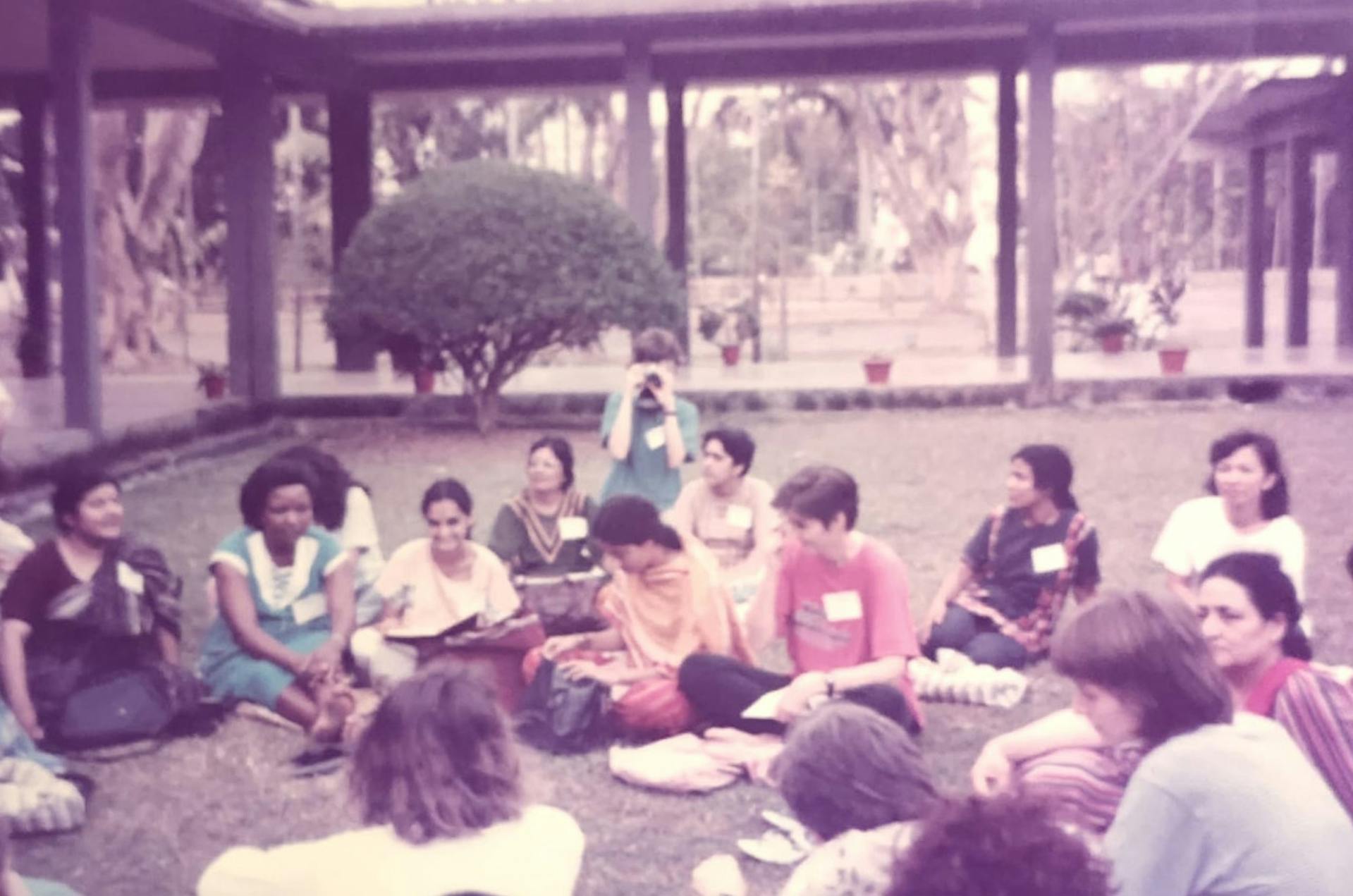
The incident was a small victory for the women students, who, having already changed the name of their hostel to ‘Students Hostel 10,’ [1] were negotiating their stifling hostel regulations with the authorities. They drafted their own set of rules, and sent a copy to the institute: perhaps the first time in the history of IIT-B that a group of students self-drafted a set of rules that eventually became official.
Chayanika internalised the lessons from this experience. In September 1979, the Supreme Court acquitted two policemen who had allegedly raped an Adivasi girl named Mathura in a police station in rural Maharashtra. In January 1980, as part of a nationwide response, feminist activists in Bombay founded the Forum Against Rape. [2] They put up posters on the IIT-B campus inviting the women of the institute to participate in their first conference in the city. Two hundred women gathered at a dharamshala in Bombay’s Khar area for this momentous meeting. One of the things the Forum discussed was the right of women to form laws around their concerns. Since there were no laws for women anyway, they decided to do what they felt was in their best interest.
hayanika was one of those in attendance. At the conference, women swapped stories about dealing with perpetrators of sexual violence. These resonated with the Hostel 10 students, who were grappling with insidious forms of sexual harassment on campus.
One night, Chayanika and her friends found a set of pamphlets with the security guard. The pamphlet was titled Campus Callgirls, a misogynist take on Campus Call, a left-leaning student magazine. The pages were riddled with derogatory remarks on left-leaning women in the institute. (Chayanika doesn’t remember details from the pamphlet. “Forgetting is one way of coping,” she told me.)
Chayanika and her friends identified three men who’d put out the pamphlet, and accosted one of them in the canteen to pressure him into naming his accomplices, and to write an apology. The victorious residents of Hostel 10 then made copies of the apology note and pasted them all over campus.
“Approaching the institution too often might be counterproductive as it can put more surveillance and restrict your mobility under the garb of safety.”
The women weren’t simply harassed by fellow students, either. Students of science are at the mercy of their supervisors and professors in more ways than one. In science, perhaps more than in other fields, it is extremely difficult to shift to a different domain of research. Supervisors run the labs and students depend on them for letters of recommendation. Predatory male professors see all these as tools to blackmail female students, Chayanika observed.
In the late 1970s and early 1980s, there was no institutional mechanism to deal with sexual harassment. More than one woman had to suffer in silence or leave the institute. “We couldn’t do much, except be there for them in whatever choice they made,” Chayanika remembered.
These solidarities kept the women going. In the absence of due process, some of them discovered the power of collective action. “When we become completely dependent on the system,” Chayanika told me, “we leave out the power of collectivisation and organisation. Approaching the institution too often might be counterproductive as the institution can put more surveillance and restrict your mobility under the garb of safety. We often had to, and have to, handle these things together.”
Trieste, 1986
n 1979, as Chayanika’s class graduated (she got a Master’s degree in physics), many left to study abroad. “The West offered greener pastures, but it was never part of my imagination,” Chayanika said: she cherished the Nehruvian notion of nation-building. Although her aspirations would alter radically in the coming years, it was “always about staying.” She decided to study theoretical physics at IIT-B. “I did not trust my skills to do experimental physics,” she told me, “and I was fascinated by mathematics. Theoretical physics is absolutely abstract and absolutely mathematical.”
For the most part, a day in the life of a theoretical physicist involved sitting at a desk and working on equations. These equations spilled over pages and sometimes took computers to process. It meant she didn’t have to be tied down to long experimental routines and could step out of a lab or office—into the world outside.
Chayanika found others in the institute who had decided to drop out of the rat race. “Outliers,” she called them. Some of the outliers came together to adapt plays by Jean-Paul Sartre and Bertolt Brecht for Marathi audiences. From script to costumes, they did it all. For Chayanika, it was a new form of creative expression.
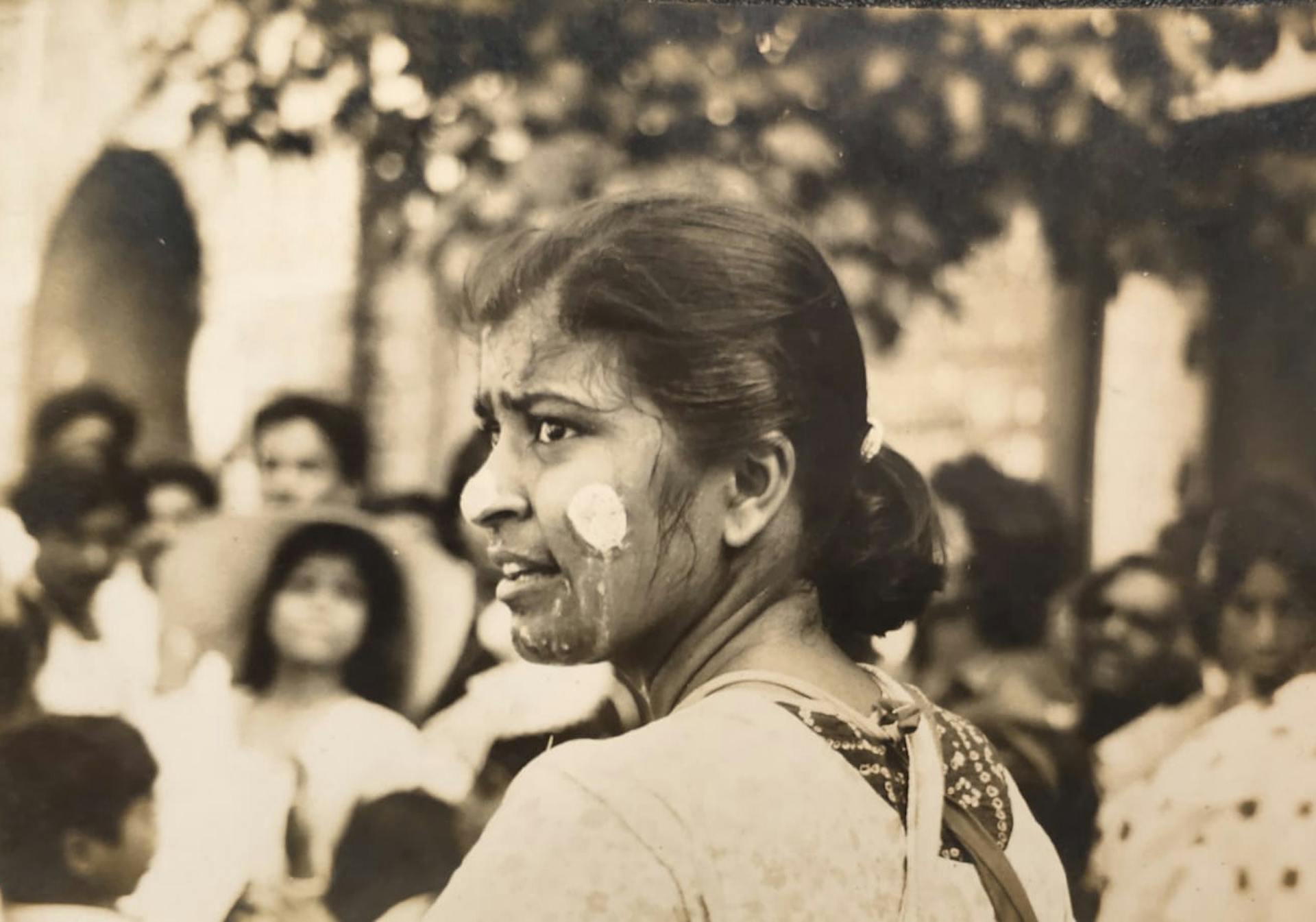
Chayanika participating in a street play in 1987. Courtesy Chayanika Shah
From a modest fellowship of around ₹500 a month, she set aside ₹30 to buy Hindi books at a discounted rate. Some of those books still line the shelves in her Mumbai house today. The revolutionary poet Nagarjun was an early favourite. When I visited her in April this year, she held out Cheeron par Chandni, a book by Nirmal Verma describing his time in Europe. “I couldn’t believe such writing in Hindi existed,” she told me.
The library at IIT-B opened more doors to the world. There, she discovered books by feminist philosophers of science like Evelyn Fox Keller and Sandra Harding. Keller’s work showed that the social and political biases of scientists found a way into their work. Harding argued that marginalised people have unique experiences that can help them construct more objective accounts of the world.
The walls that restricted Chayanika’s view were collapsing on themselves. Six years later, having submitted her dissertation (“Many Body Effects in Homogenous and Inhomogenous Electron Systems”), she attended a summer school for researchers from developing countries at the International Centre for Theoretical Physics in Trieste, Italy. There, she saw newly-minted PhDs from elite institutes scrambling to network with powerful people in the hope of building their own careers. The sexism was as rampant as it was in the Indian ecosystem.
This, then, was the portrait of the scientist as a young woman. And in that cloudy Italian town where James Joyce once lived, Chayanika had an epiphany: she was done with physics research. It was her second gaddari—betrayal—with physics; the first being when she’d refused to go to a university abroad. The long equations and super-specialised problems had no immediate consequence in the actual world, and this world itself seemed to be crumbling. She would teach instead.
Hoshangabad, 1985
n the 1980s, the Bhopal Gas Tragedy and the Sardar Sarovar Dam project raised some uncomfortable questions about technological progress in India. It was clear that marginalised communities were seen as dispensable to economic development. Science was not only a method of understanding the world, but also a tool to control it.
Chayanika went to meetings in connection with the Bhopal disaster and the Narmada Bachao Andolan, asking questions about unhindered technological progress. “What is the point at which we say we will stop doing something,” she thought, “not because of technological limitation, but because we are making a conscious social decision?”
It was also possible to believe in science and technology’s emancipatory potential while asking hard questions about how it could be used as a tool for oppression. In the 1970s and 1980s, scientists and activists around the country started organising under the banner of People’s Science Movement. PSM hoped to deploy science in the pursuit of social justice.
In 1985, Chayanika took a train from Bombay to play a small part in an ongoing revolutionary experiment broadly under the ambit of the PSM. Hoshangabad, a city on the banks of the Narmada, was the home of this experiment. The Hoshangabad Science Teaching Programme was established in 1972 with the goal of experimenting with science teaching for government schools.
At the HSTP, volunteers encouraged children to step outside the classroom and get their hands dirty. The students’ science kits, made from easy-to-source materials, had microscopes, magnets, mirrors, bulb holders and other such objects that enabled “learning by doing.” [3]
The world is the classroom: that was the big idea that teachers were trying to get across. Chayanika recalled an exercise where the teachers asked the students to find two leaves that looked exactly the same. The children would begin thinking they’d been set a straightforward task. “Lekin bachche dhundte reh jaate hai,” Chayanika said. The children would keep searching. Exasperated, they would return to the class, where they were told that it was not possible to find two identical leaves. This was one of the ways in which the concept of ‘variation’ was taught.
The HSTP drew flak for its unconventional methods. Local MLAs, for instance, couldn’t understand why it was important to use playing cards and dice to teach schoolchildren the concept of probability. “They must be teaching them to gamble” was an accusation that came up often.
Chayanika volunteered for the HSTP for several years before it was shut down. For her, then a physics teacher at a Bombay college, the work at HSTP threw open many questions of science and pedagogy.
Girgaon, 1987
he PSM also contributed to the growing resistance against state- and science-sanctioned oppression of women. Prenatal diagnostic tests were being used to determine sex of the foetus, leading to abortions of female foetuses. In 1986, the Forum Against Sex Determination and Sex Preselection (FASDSP), a coalition of organisations that included the Forum Against Oppression of Women, the Lok Vigyan Chalval and the Women’s Centre among others, came into being. Chayanika was one of its earliest members.
The FASDSP’s first demonstration was in front of the well-known Harikisandas Narottamdas Hospital, a charitable hospital known to conduct sex determination tests.
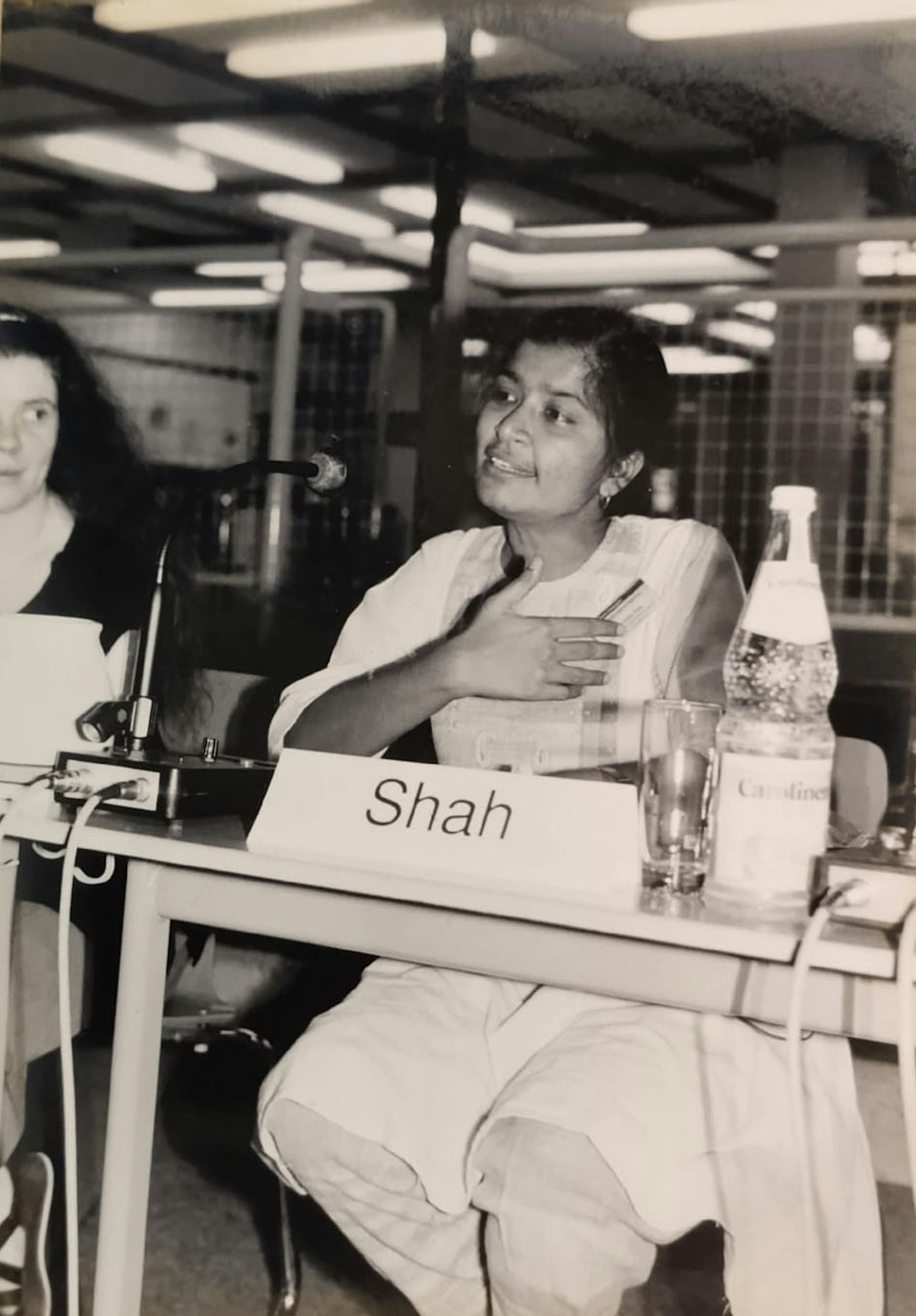
The FASDSP also started public awareness programmes. In 1988, it organised a Nari Jeevan Sangharsh Yatra in Bombay. In 12 locations across the city, there were debates, skits and video presentations to link the issues of sex-selective abortions with other forms of violence against women.
Crucially, the Forum successfully lobbied for state bans on sex-selective abortions and sex determination tests in all hospitals, government-run or not. The Maharashtra Regulation of Use of Pre-natal Diagnostic Techniques Act was not watertight, but as feminist scholar Raka Ray has written, [4] “it was a phenomenal success because it irrevocably changed the way people thought about amniocentesis [sex-determination tests].”
“I realised I was waiting for women to get burnt and admitted in the hospital so that I could do my research. The futility of the thing hit me.”
The FASDSP was also a meeting ground for several feminist collaborators. Chayanika’s work in women’s health, for instance, was often done along with the microbiologist Swatija Manorama, whom she’d met at IIT-B in the 1970s. Swatija was a kindred soul—she had gone through a similar phase of disillusionment with science research. In 1973, she was pursuing her M.Sc. in microbiology from the King Edward Memorial Hospital in Parel. For her thesis, she was looking at infections in burn wounds. Swatija noticed that almost all patients admitted in the burn unit were women.
The Indira Gandhi government had imposed the Emergency in 1975. “Kerosene became scarce at that time,” Swatija said. The number of burns cases decreased, and her research slowed down. “I realised I was waiting for women to get burnt and admitted in the hospital so that I could do my research,” she recollected. “The futility of the whole thing hit me.” That was when she joined the IIT-B hospital as a technician.
Through the FASDSP, Chayanika, Swatija and others found themselves at the frontline. At the same time, there was another ongoing battle in the war over women’s bodies. This one was about birth control.
Hyderabad, 1986
eepa Dhanraj’s documentary Something Like a War opens with a woman undergoing surgery. One Dr. Mehta explains the procedure of “laparoscopic sterilisation” to the camera even as he performs it on a groaning woman. As the camera moves, we see a hand clasping the woman’s mouth to shut it. The operation proceeds swiftly and without anaesthesia as the doctor explains why this method is better than others: “No private parts of ladies are seen in this method,” is his persistent refrain.
Like factories and dams, medicine is an aspect of modern science primarily designed and experienced through intervention and control. Like all systems of control, it colludes with the modern nation state to exert authority over the most marginalised bodies, often those of women, queer, transgender, intersex and disabled persons.
‘Family planning’ continued to be both a state and scientific preoccupation in the 1980s. Before the 1980s, the predominant methods of birth control included using condoms, intrauterine devices like the copper-T, and daily-use hormonal pills. In the mid-1980s, the focus shifted to injectable contraceptives for women. These long-acting contraceptives, containing either the hormone progesterone or its synthetic form progestin, were injected into the bodies of women every two to three months.
These injectables extracted their pound of flesh. Reported side effects included loss of bone density, menstrual inconsistency and nausea. On some occasions, it was found, it took a woman around 10 months after stopping the contraceptive to regain her fertility. But that wasn’t even the most shocking bit. Pharmaceutical companies, the medical fraternity and the state had collectively chosen to ignore that the contraceptives were being tested on women without their informed consent.
There’s an incident that took place in 1986 that illustrates what activists like Chayanika were up against. That day, volunteers with the Stree Shakti Sanghatana had landed up at the site of a clinical trial in Hyderabad. The injectable contraceptive Net-En was being administered there.
The activists were armed with information about the side effects of the contraceptives and had a straightforward demand of the doctors: tell the women participating in the trials about the pros and cons. The doctors were not cooperative. “Why don’t you tell them,” they told the activists. So they did. Most of the women left the trial site as a result.
The crux of feminist politics is its multiplicity. Feminists from the 1980s existed in these multiplicities. They were drawing from science to think about how women could understand their bodies and sexualities. They were doing this while protesting state-sanctioned violence of women’s bodies, meted out through the language of science. Chayanika, for example, would try to stay on top of the latest Western research on contraception. “We were concentrating on looking at information that was available from Western medicine: how clinical trials are done, what the papers are saying.”
In 1991, Chayanika, Swatija and Kamaxi Bhate, another FASDSP member, wrote We and Our Fertility: The Politics of Technological Intervention. Initially published as a thin booklet in English, [5] We and Our Fertility explained the biological workings of the menstrual cycle and highlighted the havoc hormonal contraceptives were wreaking on women’s bodies.
Through the 1990s, feminist health activists continued to resist what they called “population control methods,” including hormonal implants and anti-fertility vaccines. “When will we be able to finally say that we do not need any more new technologies for contraception?” Chayanika asked me, when she told me this Hyderabad anecdote. “There is still so much left to do. Why are we not researching the side effects of these contraceptives? We don’t understand what these contraceptives do to women’s bodies.”
Chembur, 2009
n 1995, a queer collective called Lesbians and Bisexuals in Action (LABIA) was founded by 10 queer women at a Mumbai café. Initially, it was called Stree Sangam to ride on the visibility of feminist politics and to avoid the visible proclamation of queer identity. But in 2002, it changed its name to LABIA. [6]
Chayanika used to conduct sexuality workshops under the auspices of LABIA. She opened these with a provocative question: “Who is a woman?” Gender, rather than sex, foregrounded these discussions. The debates inevitably snowballed into larger questions about the way science produces knowledge. [7] Chayanika had started questioning the very nature of science.
In 2008, the Indian Association for Women’s Studies (IAWS) had organised its silver jubilee conference at the University of Lucknow. Chayanika and others from LABIA were coordinating a subtheme on “Generating New Knowledge Around Sexualities and Genders.” The sociologist Gita Chadha was putting together a series of presentations on “Gender, Science and Technology.” This is where Gita and Chayanika met for the first time.
“I had read about Chayanika’s work already, and had tried to reach out to her two-three times before,” Gita, now faculty at the University of Mumbai, told me. “But I couldn’t get through to her. After all, I was not in the same activist circles, and I was trying find my own feminism. My engagement with science was also from a different, somewhat lonely, location.”
But she, too, was interested in the nature of truth and how new knowledge is produced. The year following the conference, Gita was approached by the Advanced Centre for Women’s Studies at Mumbai’s Tata Institute of Social Sciences to design a Master’s program in Women’s Studies. Chayanika was there too. Over the course of their discussions, they decided to co-design and co-teach a course on Feminist Science Studies.
The first batch of students had a largely homogenous background. “Everyone barring two students was from the humanities,” Chayanika told me. In one of the early classes, the teachers asked the students about their early experiences with science. “Boring” and “pointless” was the response.
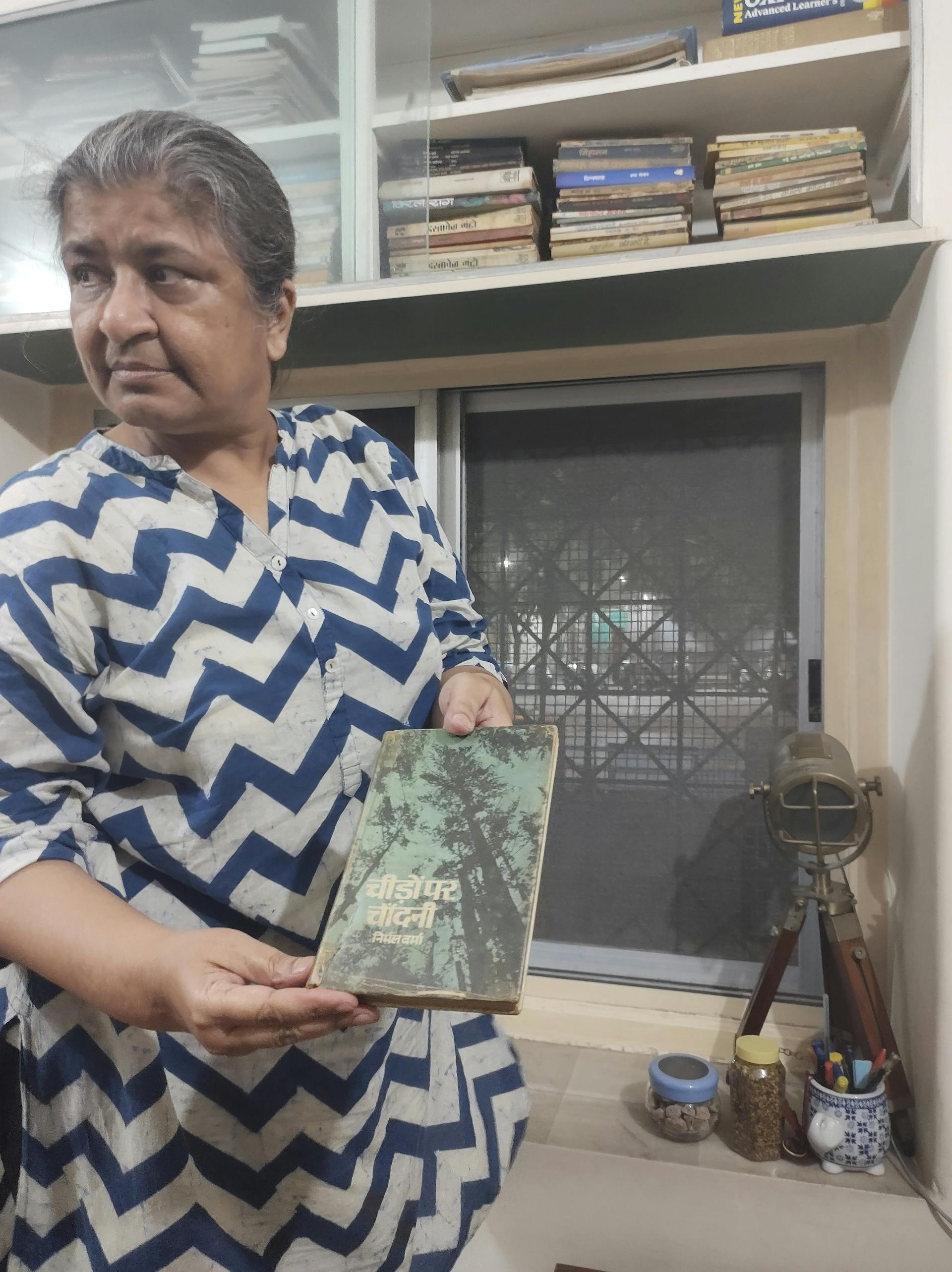
Chayanika at her Mumbai residence in April 2022, holding out her copy of Nirmal Verma’s ‘Cheeron par Chandni.’ Picture Credit: Bishal Kumar Dey.
This upset Chayanika. She knew it was important for the students to be introduced to the wonders of science before they learnt to critique it. She decided to teach a class on the ‘powers of 10’: the whole point was to convey the mathematical magic of the scaling approach. The whole universe could be explained through the powers of 10, Chayanika told the class: from nucleonic particles to the limits of our own galaxy.
“The class was wonderful,” Gita recalled. “I fully understood Chayanika’s hurt and her need to do this class. It ended with several students wishing they had been taught science like this in school.” The course itself was transformative for some of the students. One of them was Aswathy Raveendran, now faculty at the Homi Bhabha Centre for Science Education (HBCSE) in Mumbai. Aswathy was working on her PhD from HBCSE, and had only recently moved away from doing science. “I was disenchanted by science, but I was struggling to articulate why I was disenchanted,” Aswathy told me.
“I was listening to these perspectives on science for the first time. I felt very safe in that space, and it helped me adopt a feminist lens in my own work.”
When she came to HBCSE, there was very little work happening that looked at science and technology through a critical lens. That is when one of Aswathy’s professors, K. Subramaniam, suggested that she attend—for no credits—Gita and Chayanika’s course at TISS. “It was mind blowing for me,” Aswathy recalled. “I was listening to these perspectives on science for the first time. I felt very safe in that space, and it helped me adopt a feminist lens in my own work.”
Gita and Chayanika complemented each other as scholars and friends: to Chayanika’s nuanced lived experiences, Gita brought her expertise in sociological theory. But co-teaching the course didn’t come without its frustrations. There were points when each felt that their voice was not being heard. “We often fought in front of our students,” Gita recounted, and remembered that they’d once had a mighty row in the middle of Churchgate station.
Co-teaching also meant that two different voices could coexist in the same space. The debates that feminists were having with scientists could be spontaneously laid bare in the classroom. “We both completely owned the course, and we grew with each other,” Gita said. “I wish we could do it again.” [8]
Epilogue
ver the last decade, Chayanika has been spending more time working on issues in higher education. Her experience with the Feminist Science Studies course informed the Science Education course she designed and taught at TISS. “It is like tying all the strands of my life—as an activist, a teacher and a researcher—together,” she told me. [9]
It is remarkable to me that most of Chayanika’s work happened through independent unstructured collectives, and outside academic settings. One reason for this, she explained, was a certain “porosity” in fields like Gender Studies and Women’s Studies that have allowed activist and academic voices to speak to each other. “This work couldn’t have happened in the sciences,” she said.
Thinking back to her formative years at IIT-B, Chayanika observed that “there was something about that time and space” that brought women from different locations and ideologies together. Over four decades, Chayanika and several of her batchmates have taken the feminist question in Indian science forward in their own ways. The astrophysicist Prajval Shastri, for instance, has been a vocal advocate for improving representation for women and marginalised people in science.
Neelima Gupte—a year senior to Chayanika—and Sumathi Rao, Chayanika’s batchmate, have continued to engage with the gender disparity problem in the Indian physics establishment. Swatija Manorama continues to work in women’s health, the PSM, and with the Forum Against Oppression of Women. “We want to change the world,” Swatija said when I asked what kept her going at the age of 68.
“We came at the same time in the same institution, and we got exposed to ideas of feminism as feminism was evolving in the city,” Chayanika said about herself and her comrades. “And from there, we actually carried it with us into whatever we did later.”
Now, feminist science studies in India has found other trajectories to follow. The suicide of Rohith Vemula at the Hyderabad Central University revealed how people from marginalised caste backgrounds continue to face casteism in Indian science practice. The work of scholars like Abha Sur, Shalini Mahadev, Renny Thomas and Jayasree Subramanian has foregrounded the caste question in Indian science. Similarly, the efforts of activists like Grace Banu and scientists like Bittu Rajaraman have pushed the discipline to investigate how queer and transgender persons negotiate their relationship with science.
Chayanika’s own work is far from over. When I visited her in April, she had just returned from a meeting where activists and concerned citizens had come together to organise against growing communalisation in Mumbai. She was excited and enthusiastic despite a long, hot day.
“I am now waiting for the time when people I work with will say I am as old as their grandmother,” she said. Meanwhile, she continues to write, resist and question. Where will the answers come from? I looked at Chayanika’s WhatsApp status for a clue: Hawaaon mein yaaron jawaab milega. Fizaaon mein jawaab milega.
The answer, my friends, is blowing in the wind.
Sayantan Datta (they/them) is a queer-trans science journalist. They write at the intersections of science, gender, sexuality, caste and health.
